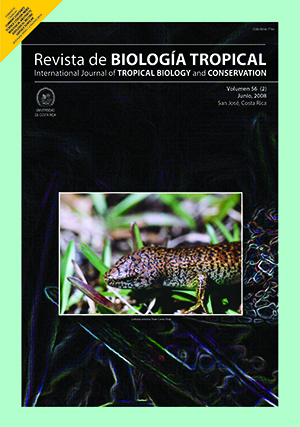Resumen
La primera línea celular de Aedes aegypti fue establecida por Grace en 1966 y desde entonces se han utilizado para el estudio de virus, bacterias y parásitos. En el presente trabajo se describen, por primera vez, algunas características citoquímicas de los cultivos celulares de A. aegypti, infectados con la cepa (MHOM/CO/87CL412) de Leishmania panamensis. También se realizó un estudio morfológico de las células del cultivo. Se observaron 30 células pequeñas con apariencia fibrolastoide de 10.84±2.54 µm de largo y 5.31±1.26 µm de ancho; otras 30 presentaron apariencia epitelioide con 23.04±4.00 µm de largo y 13.96±3.70 µm de ancho; éstas últimas predominaron sobre las de apariencia fibroblastoide. De 113 células, un 7.08%, presentaron abundantes gránulos citoplasmáticos positivos con la coloración de PAS, indicando presencia de polisacáridos. La prueba de peroxidasa dio un resultado negativo. El mayor porcentaje de infección (18.90%), de un total de 101 células, se presentó el día 6. Ultraestructuralmente, las células presentaron un citoplasma con aspecto vacuolado; algunas contenían parásitos, otras material fibrilar y otras estaban vacías. Los resultados indican que los cultivos celulares de A. aegypti pueden ser infectados por L. panamensis y mantener dicho proceso por aproximadamente una semana.##plugins.facebook.comentarios##

Esta obra está bajo una licencia internacional Creative Commons Atribución 4.0.
Derechos de autor 2008 Revista de Biología Tropical
Descargas
Los datos de descargas todavía no están disponibles.






